I was doing a test that required an algorithm for Binary Tomography. A set of 38 test values are supplied that test correctness, but there is also a time limit of 1 CPU sec to complete all the tests. The problem is as follows:
Output “Yes” if there exists an m-by-n matrix A, with each element either being 0 or 1, such that
Otherwise output “No”.
For each test, 2 arrays are provided:
- r (the sum of each row in the matrix)
- c (the sum of each column in the matrix)
In the equation:
- m is the length of the r array, where 1 <= m
- n is the length of the c array, where n <= 1000
- ri is an element of r, where 0 <= ri <= n
- cj is an element of c, where 0 <= cj <= m
A "Yes" example
m = 3; n = 4; r = [2, 3, 2]; c = [1, 1, 3, 2];
A "No" example
m = 3; n = 3; r = [0, 0, 3]; c = [0, 0, 3];
I have a solution that appears to give correct answers, however it only manages 12 / 38 tests before the 1 second of CPU time is exceeded.
I originally wrote the code in ES5 and then went back and converted to to ES3 to try and get more performance out of it. (originally managed 9 tests as ES5). There doesn't seem a great deal left that I can do to the current algorithm to improve the performance (unless I am mistaken). This leads me to believe that my algorithm is at fault an that there must be a faster algorithm for doing this. I did a ton of reading trying to find one and ended up with a headache :)
So I'm turning to the community to see if anyone can suggest a faster algorithm than I am currently using.
'use strict';
const ZEROS = (function (seed) {
let string = seed;
for (let i = 0; i < 19; i += 1) {
string += seed;
}
return string;
}('00000000000000000000000000000000000000000000000000'));
const ZEROSLEN = ZEROS.length;
const permutate = function (n, ri) {
const result = [];
const memoize = {};
let count = 0;
do {
const bin = count.toString(2);
if (ZEROSLEN + bin.length > ZEROSLEN + n) {
break;
}
if (!memoize[bin] && (bin.split('1').length - 1) === ri) {
const string = (ZEROS + bin).slice(-n);
const sLen = string.length;
const perm = new Array(sLen);
for (let i = sLen - 1; i >= 0; i -= 1) {
perm[i] = +string[i];
}
memoize[bin] = result.push(perm);
}
count += 1;
} while (count);
return result;
};
const getMatrixSum = function (n, matrix) {
const mLength = matrix.length;
const rows = new Array(mLength);
const a = new Array(n);
const last = mLength - 1;
for (let x = n - 1; x >= 0; x -= 1) {
for (let y = last; y >= 0; y -= 1) {
rows[y] = matrix[y][x];
}
let sum = 0;
for (let i = rows.length - 1; i >= 0; i -= 1) {
sum += rows[i];
}
a[x] = sum;
}
return a;
};
const isEqual = function (a, b) {
const length = a.length;
if (length !== b.length) {
return false;
}
for (let i = length - 1; i >= 0; i -= 1) {
if (a[i] !== b[i]) {
return false;
}
}
return true;
};
const addRow = function (i, prev, r, c, result) {
if (result) {
return result;
}
const n = c.length;
const ri = r[i];
if (ri < 0 || ri > n) {
throw new RangeError('ri out of range');
}
const p = permutate(n, ri);
const m = r.length;
const rsLast = m - 1;
const nextI = i + 1;
for (let x = p.length - 1; x >= 0; x -= 1) {
const permutation = p[x];
const next = prev.slice();
next.push(permutation);
const sums = getMatrixSum(n, next);
if (i < rsLast) {
let memo = 0;
for (let j = sums.length - 1; j >= 0; j -= 1) {
if (sums[j] > c[j]) {
memo += 1;
}
}
if (!memo && addRow(nextI, next, r, c, result)) {
return true;
}
} else if (isEqual(sums, c)) {
return true;
}
}
return false;
};
const isSolvable = function (r, c) {
const m = r.length;
const n = c.length;
if (m < 1 || n > 1000) {
throw new Error('Bad data');
}
for (let j = n; j >= 0; j -= 1) {
const cj = c[j];
if (cj < 0 || cj > m) {
throw new RangeError('cj out of range');
}
}
return addRow(0, [], r, c, false) ? 'Yes' : 'No';
};
console.log(isSolvable([2, 3, 2], [1, 1, 3, 2]));
console.log(isSolvable([0, 0, 3], [0, 0, 3]));It may be worth noting that the tests are being run on SpiderMonkey version JavaScript-C24.2.0
Refs:


